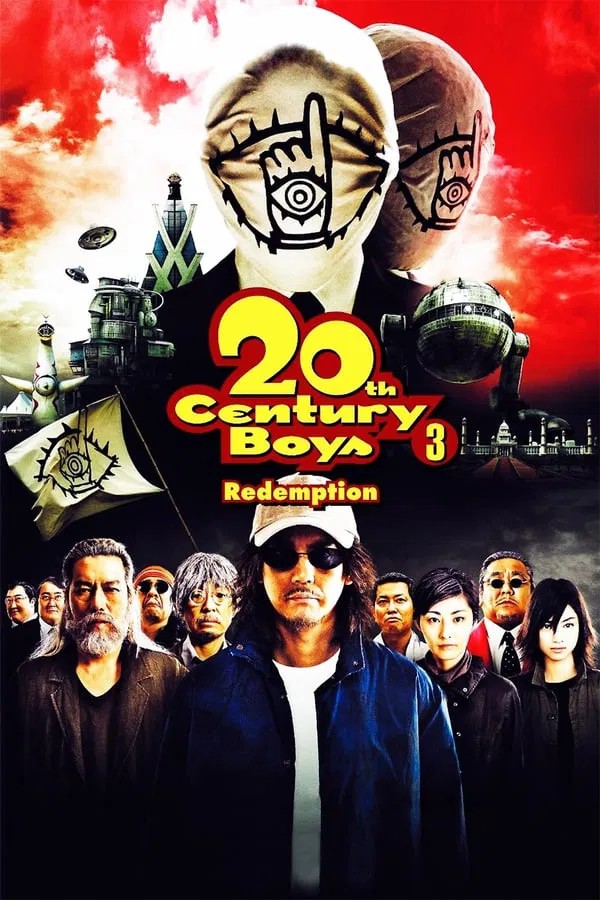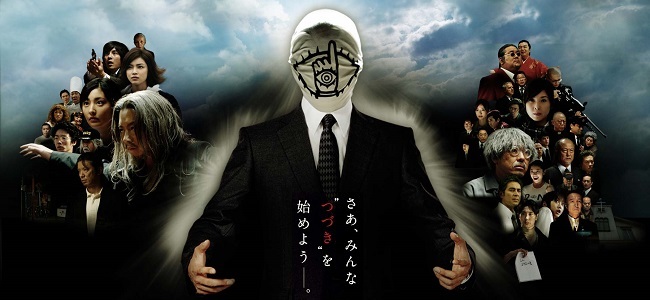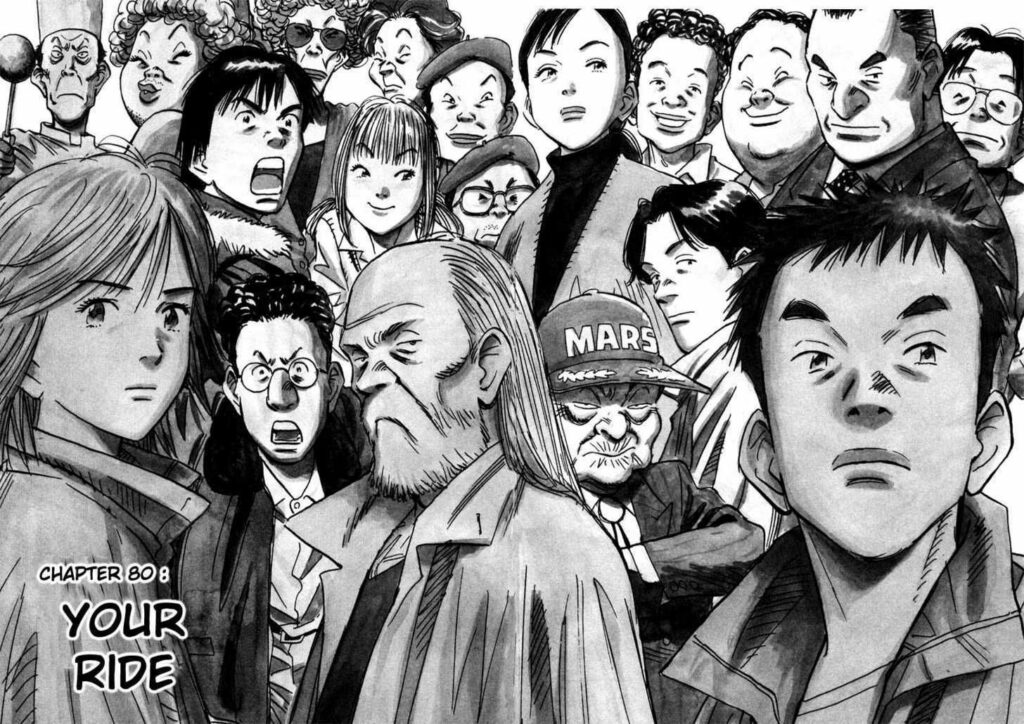Adapting Naoki Urasawa’s 20th Century Boys—a manga often hailed as one of the greatest literary achievements in Japanese pop culture—was akin to scaling a creative Everest. Spanning 22 volumes, Urasawa’s narrative blends coming-of-age nostalgia, Orwellian dystopia, and a labyrinthine conspiracy that spans decades. Director Yukihiko Tsutsumi’s decision to split the story into three films, released between 2008 and 2009, was both visionary and risky. With a combined budget of ¥6 billion (roughly $60 million), the trilogy was Japan’s most expensive live-action project at the time, shot back-to-back over two years. Unlike conventional blockbusters, it leaned heavily on the manga’s cult following rather than star power or franchise ties.
Redemption, the final chapter, faced an impossible task: satisfying hardcore fans while untangling a plot involving over 50 characters, alternate timelines, and existential questions about memory and identity. Critics questioned whether a live-action medium could capture Urasawa’s meticulous pacing and psychological depth. Yet, Tsutsumi’s trilogy—particularly Redemption—stands as a fascinating artifact of early 2000s Japanese cinema, straddling indie arthouse sensibilities and mainstream spectacle.
Plot Dissected: Childhood Dreams and Apocalyptic Nightmares

Redemption opens in 2017, fourteen years after the events of Chapter Two: The Last Hope. The world believes Kenji Endo (Toshiaki Karasawa), the reluctant hero who united his childhood friends against the cult leader “Friend,” died stopping a viral apocalypse. In his absence, Friend’s regime has reshaped Japan into a totalitarian state, erasing dissent through propaganda and fear. Kenji’s niece, Kanna (Takako Tokiwa), now a young woman, becomes the symbol of resistance, uncovering secrets buried in her uncle’s past—including the truth about Friend’s identity and the origins of “The Book of Prophecy,” a comic they wrote as children that eerily predicted global catastrophes.
The film’s structure is a mosaic of timelines. Flashbacks to the 1970s reveal the group’s childhood bonds and the accidental creation of their apocalyptic “game,” while scenes in 2017 depict Kanna’s guerilla war against Friend’s empire. Tsutsumi’s script condenses Urasawa’s sprawling narrative with mixed success. Key arcs, like the revelation of Friend’s true identity (a twist preserved from the manga), land with emotional heft, but secondary threads—such as the fate of Maruo (Takashi Ukaji) or the global “Friendship” movement—feel rushed. The third act pivots abruptly to a worldwide conspiracy, a narrative choice that sacrifices depth for scale.
Yet, the film’s heart lies in its quieter moments: Kanna’s grief over Kenji’s absence, the bittersweet reunion of surviving friends, and the haunting motif of childhood artifacts (a harmonica, a baseball glove) as relics of a lost world. These elements elevate Redemption beyond mere fantasy, grounding its existential stakes in raw humanity.
Cast and Performances: A Symphony of Imperfect Heroes
The trilogy’s ensemble cast is a masterstroke of casting, blending seasoned actors with newcomers. Toshiaki Karasawa’s Kenji, though physically absent for much of Redemption, looms large as a symbol of hope. His portrayal in earlier films—a flawed, everyman hero plagued by self-doubt—anchored the story’s emotional core. In Redemption, Takako Tokiwa inherits the mantle as Kanna, delivering a performance that balances steeliness and vulnerability. Her scenes with Etsushi Toyokawa’s Otcho, a former delinquent turned rebel leader, crackle with urgency, their dynamic echoing Kenji’s relationships in prior installments.
Teruyuki Kagawa’s portrayal of Friend is a career-defining turn. He oscillates between chilling menace and tragic fragility, embodying Urasawa’s vision of a villain shaped by childhood trauma. Notably, his final confrontation with Kanna—a dialogue-driven scene devoid of action—is a masterclass in subdued acting, revealing the character’s twisted longing for validation.
However, the film’s sprawling cast is also its Achilles’ heel. Figures like Fumiyo Kohinata’s Keroyon (a paranoid conspiracy theorist) and Kuranosuke Sasaki’s Yoshitsune (a disillusioned teacher) are reduced to caricatures, their arcs truncated by runtime. Hiroyuki Miyasako’s Yukiji, a fan-favorite manga character, feels underutilized, her heroic sacrifice lacking the narrative buildup it deserved. While Tsutsumi’s rehearsal-heavy approach ensured chemistry among the core cast, the script’s brevity with side characters leaves gaps that only manga readers can fill.
Visuals and Direction: Nostalgia as a Cinematic Language
Cinematographer Takahide Shibanushi’s work in Redemption is a study in contrasts. The 2017 sequences are bathed in cold, desaturated tones—concrete grays and metallic blues—evoking the sterility of Friend’s regime. Conversely, flashbacks to the 1970s glow with golden-hour warmth, the camera lingering on sun-drenched fields and cramped, cluttered bedrooms. This visual dichotomy mirrors the story’s central theme: the corruption of innocence.
Tsutsumi’s direction shines in set pieces that blend past and present. A standout sequence intercuts a childhood baseball game with a riot in 2017, the sound of a cracking bat merging with gunfire. Similarly, Kanna’s journey through a derelict Tokyo, plastered with Friend’s propaganda, mirrors Kenji’s walk through the same streets as a child. These parallels, while heavy-handed, reinforce the cyclical nature of history—a core tenet of Urasawa’s work.
The film’s practical effects remain impressive. Friend’s “virus,” depicted through prosthetic-laden victims and eerie masks, avoids dated CGI, while the climactic showdown in a replica of Kenji’s childhood field uses minimal green screens, relying on stark lighting and claustrophobic framing. However, action scenes suffer from choppy editing, a recurring flaw in Tsutsumi’s trilogy. The final battle, meant to be an emotional crescendo, feels disjointed, with shaky camerawork obscuring key moments.

Music and Sound Design: Echoes of a Lost Era
Composer Ryomei Shirai’s score is a character in itself. Leitmotifs from the first two films—a melancholic piano melody representing Kenji’s resolve, a discordant synth for Friend’s menace—recur with new variations. In Redemption, Shirai introduces a haunting choral arrangement during Kanna’s pivotal scenes, symbolizing her burden as Kenji’s heir. The soundtrack’s standout track, “20th Century Boy” (a cover of T. Rex’s classic), plays during the end credits, its defiant lyrics mirroring the trilogy’s themes of rebellion and legacy.
Sound design also plays a subtle role. The hum of Friend’s surveillance drones, the echo of footsteps in empty hallways, and the recurring chime of a childhood music box all contribute to the film’s oppressive atmosphere. These auditory details, often overlooked, deepen the audience’s immersion into Urasawa’s world.
Critical and Audience Reception: A Divided Legacy
Redemption polarized audiences and critics upon release. In Japan, it earned praise for its “emotional fidelity” to the manga (Mainichi Shimbun) and “ambitious scale” (Cinema Today), grossing ¥3.5 billion ($35 million) domestically. Western critics were less kind; Variety dismissed it as “a convoluted mess,” while The Guardian noted its “overstuffed plot” but praised Tokiwa’s “star-making performance.”
Audience scores reflect this divide:
- IMDb: 7.3/10 (8,500+ votes)
- TMDB: 7.5/10
- Rotten Tomatoes: 67% (critics), 82% (audience)
The trilogy’s total global earnings topped ¥12 billion ($120 million), a success in Japan but a modest figure internationally. Its fragmented overseas release—highlighted by Anime News Network’s report on its limited 2010 U.S. run—underscored the challenges of marketing a lore-heavy, non-fantasy Japanese film to global audiences.
Yet, in the decade since its release, Redemption has garnered cult status. Fan forums dissect its Easter eggs, while academic circles analyze its commentary on collective memory and authoritarianism. In 2019, a 4K remastered trilogy screening in Tokyo sold out within hours, proving its enduring resonance.
Cultural Context: Japan’s Millennial Anxieties
Redemption’s themes of societal collapse and manipulated truth resonate deeply with Japan’s post-2000s zeitgeist. Released during the Lehman Brothers crisis and amid fears of global pandemics (echoing the manga’s 1990s creation during Japan’s economic stagnation), the film mirrors collective anxieties about trust in institutions and the fragility of reality. Friend’s cult, which weaponizes nostalgia and fear, feels eerily prescient in an age of disinformation and social media echo chambers.
Tsutsumi’s adaptation also reflects Japan’s complex relationship with its Showa-era past (1926–1989). The childhood flashbacks, steeped in 1970s pop culture—Ultraman toys, folk music, and sci-fi comics—evoke a bittersweet longing for a simpler time, a sentiment still prevalent in contemporary Japan.
The Indie Paradox: Balancing Art and Commerce
Despite its blockbuster budget, the 20th Century Boys trilogy retains an indie spirit. Tsutsumi prioritized character-driven scenes over spectacle, a rarity in franchise filmmaking. The decision to shoot on location in retrofitted Tokyo neighborhoods, rather than soundstages, added authenticity but logistical headaches. Interviews with crew members reveal that the child actor casting—a critical element—took months, with Tsutsumi insisting on chemistry reads over star power.
This indie ethos extended to marketing. Rather than relying on trailers, the studio released cryptic teasers styled after Friend’s propaganda, blurring the line between film and reality. While innovative, this strategy alienated casual viewers, further cementing the trilogy’s niche appeal.
Ferdosa Abdi’s Verdict: A Flawed Masterpiece for the Ages
20th Century Boys 3: Redemption is not a perfect film. Its pacing is uneven, its supporting cast underserved, and its climax overly reliant on exposition. Yet, it transcends these flaws through sheer ambition and heart. Tsutsumi’s reverence for Urasawa’s work is palpable in every frame, from the painstaking recreations of iconic manga panels to the nuanced handling of themes like sacrifice and redemption.
Tokiwa and Kagawa’s performances elevate the material, transforming dense lore into deeply human drama. Shibanushi’s cinematography and Shirai’s score weave a sensory tapestry that lingers long after the credits roll. While the film stumbles under the weight of its legacy, it ultimately succeeds as a testament to storytelling’s power to bridge generations.
For manga fans, Redemption is a cathartic finale, a love letter to a story that shaped their youth. For cinephiles, it’s a bold experiment in adaptation, flawed but fascinating. And for Japan, it’s a cultural touchstone—a mirror held to its past, present, and uncertain future. In Kenji’s words, scribbled in a childhood notebook: “We might not be heroes, but we can try.” Redemption tries, stumbles, and soars, embodying the messy, beautiful struggle of art itself.

